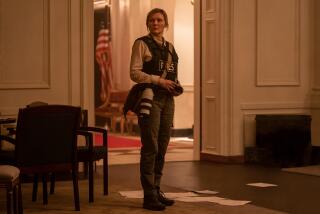‘Witness to Gettysburg’
- Share via
Considering the enormous audience attracted by the recent television miniseries on the American Civil War--or, if you prefer, the War Between the States--it may appear foolish to call further attention to that bloody struggle that left indelible scars on our society. But the variety of responses showed the power that it exerts on our national imagination--if there is such a thing--and, to me at least, added to the importance of Richard Wheeler’s “Witness to Gettysburg,” recently released in a set of six cassettes effectively narrated by Roy Whitfield.
By focusing on the battle of Gettysburg alone, this account not only provides a fascinating picture of the military figures and the tactical forces at work on both sides but also builds up a composite picture of domestic detail that creates a persuasive picture of what civilian life was like and how it was affected by the war.
The entire narrative is drawn from eyewitness accounts of participants, ranging from officers’ memoirs and those of men in the ranks to reports from householders in the Pennsylvania town and farmers in the surrounding countryside.
We approach the battlefield in slow advances on both sides, shifting back and forth between Gray and Blue and from unit to unit in the two commands. We learn intimate details of the daily life of the marching and countermarching troops as well as the temper of regiments and brigades drawn from the varied population of the nation in all its diversity. Individual officers of both armies become credible human beings as they are revealed by their personal vanity or their regard for the men under them. Not even the ultimate Southern gentleman general escapes this when it is suggested that Lee’s judgment on the day of Pickett’s Charge may have been affected by the state of his bowels.
Perhaps the most unusual feature of this account is not simply the war’s effect on the civilian population of the small towns through which the troops marched or at times settled into, and the measures taken by townsfolk and farmers alike to protect themselves or to escape the conflict, but also the effect of the troops on all of nature. The trees around the encampments and artillery placements are shattered. Cattle caught in the fields are maimed or slaughtered, and birds flutter in confusion, their roosts and nesting places destroyed.
Though the Civil War has long been considered the first “modern war,” a war essentially of movement and maneuver, this detailed account reminds one of how lumbering and slow such movement could be and how much it was at the mercy of written messages delivered by hand when wires were cut. In another sense, it reminds one of how “personal,” in the sense of hand-to-hand individual conflict, the war was, and how long the wounded might be left unattended. Another striking contrast is the clear distinction between the military forces and the civil population, with both local and foreign “observers,” many of whom were in no way connected with the press, stationing themselves at points where they could witness the battle as something close to a form of entertainment.
At times, the listener feels like one of Stendhal’s characters, wandering about in the middle of an action trying to distinguish friend from foe. But there is a difference, for the collective memory of America has, however dimly, absorbed and given meaning to Culp’s Hill, Little Round Top, Seminary Ridge and, most prominently, Pickett’s Charge. Or perhaps these memories are not so much national any longer as they are generational.
Either way, today’s world is one in which they should not be forgotten.
WHERE TO ORDER TAPES:
Recorded Books. Call 1-800-638-1304, or write: Recorded Books, Inc., 270 Skipjack Road, Prince Frederick, MD 20678. Thirty-day rentals are available.
More to Read
The complete guide to home viewing
Get Screen Gab for everything about the TV shows and streaming movies everyone’s talking about.
You may occasionally receive promotional content from the Los Angeles Times.






